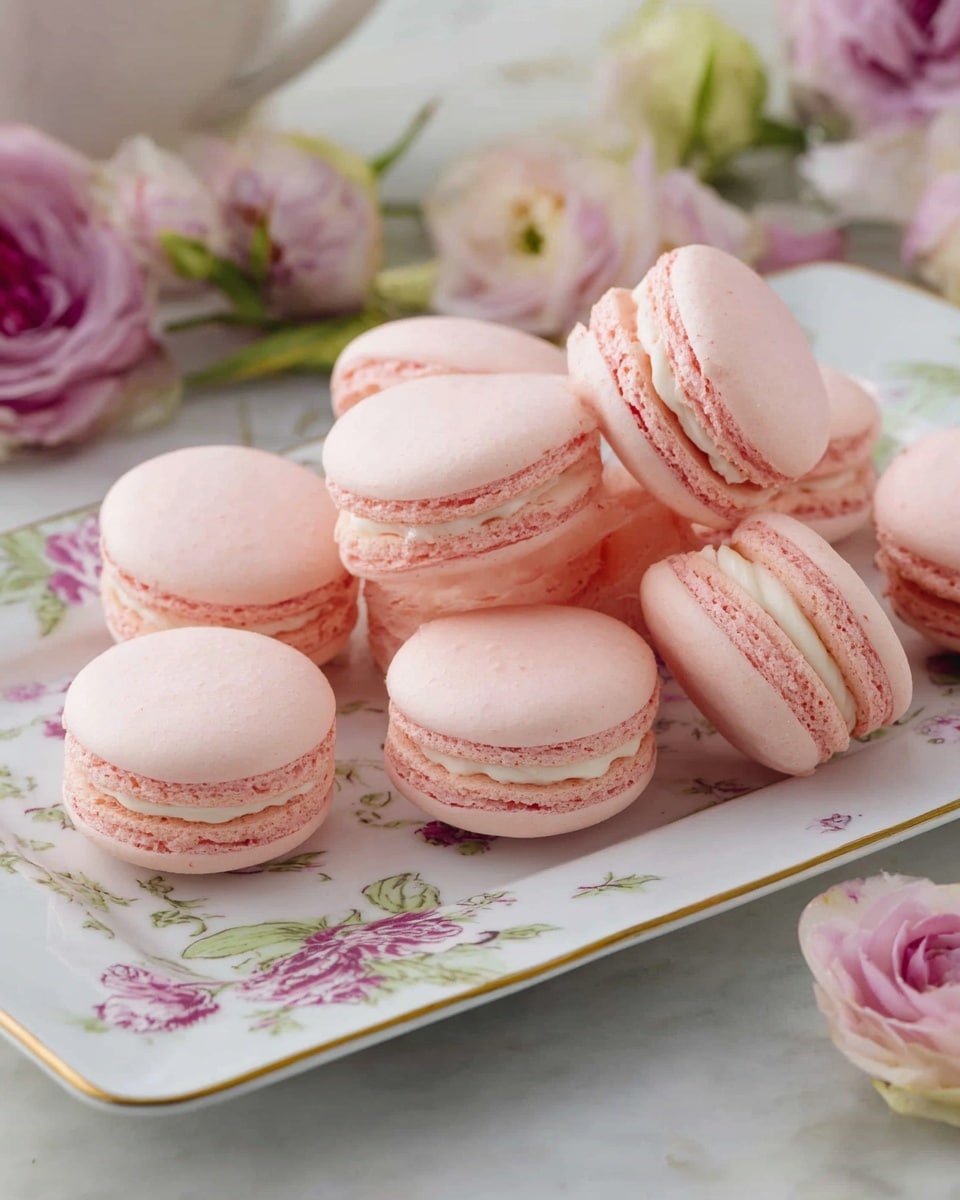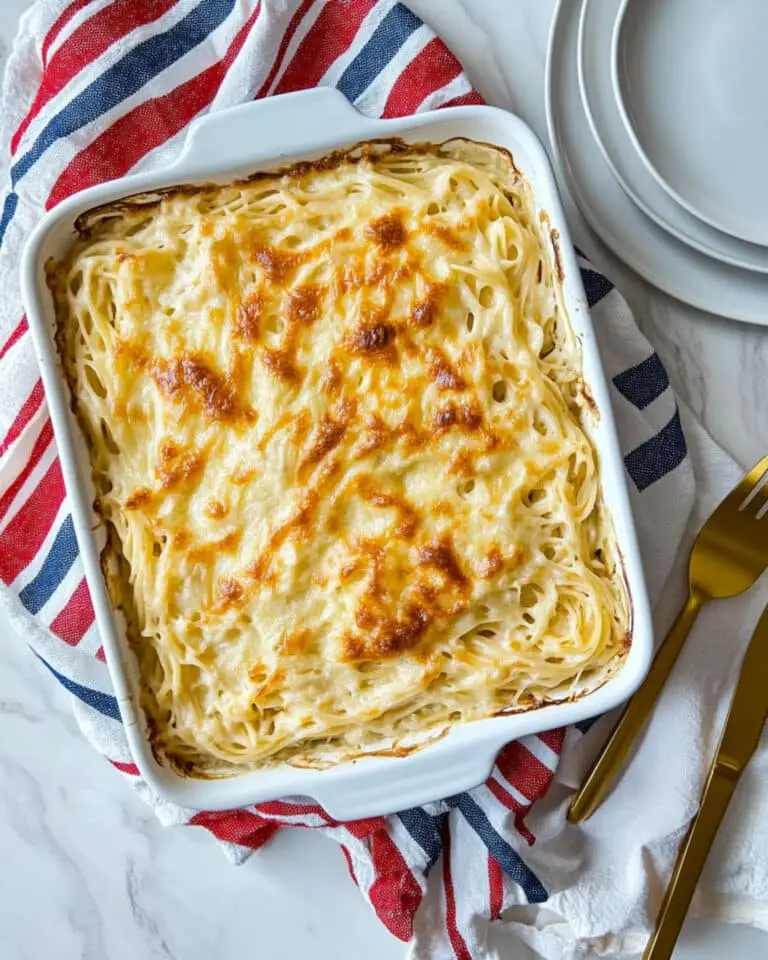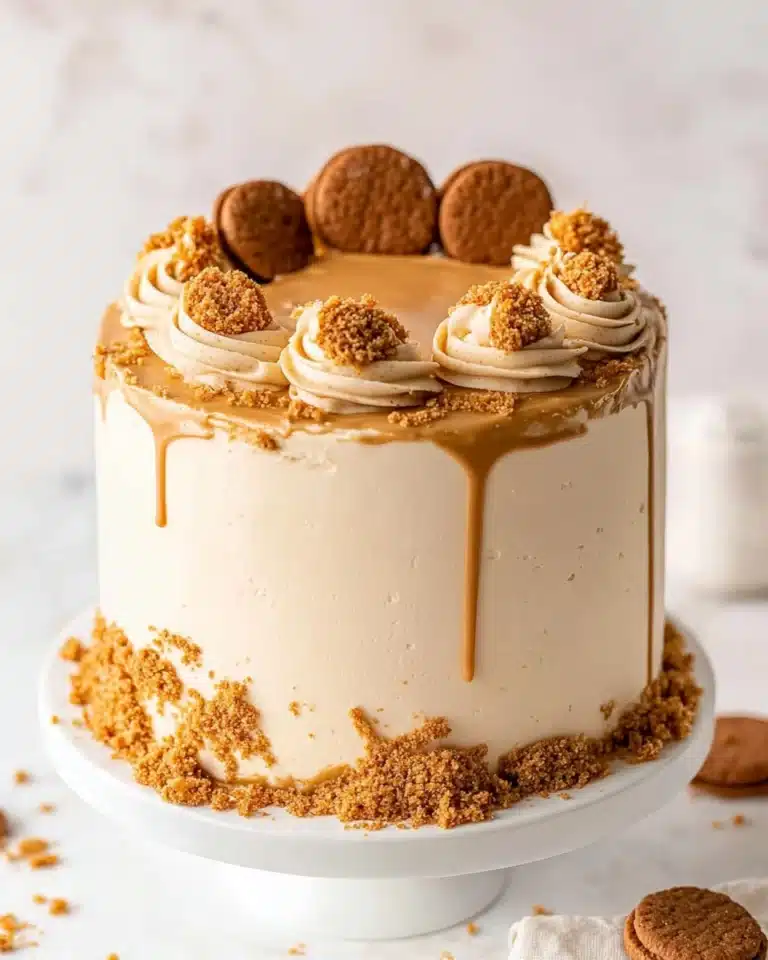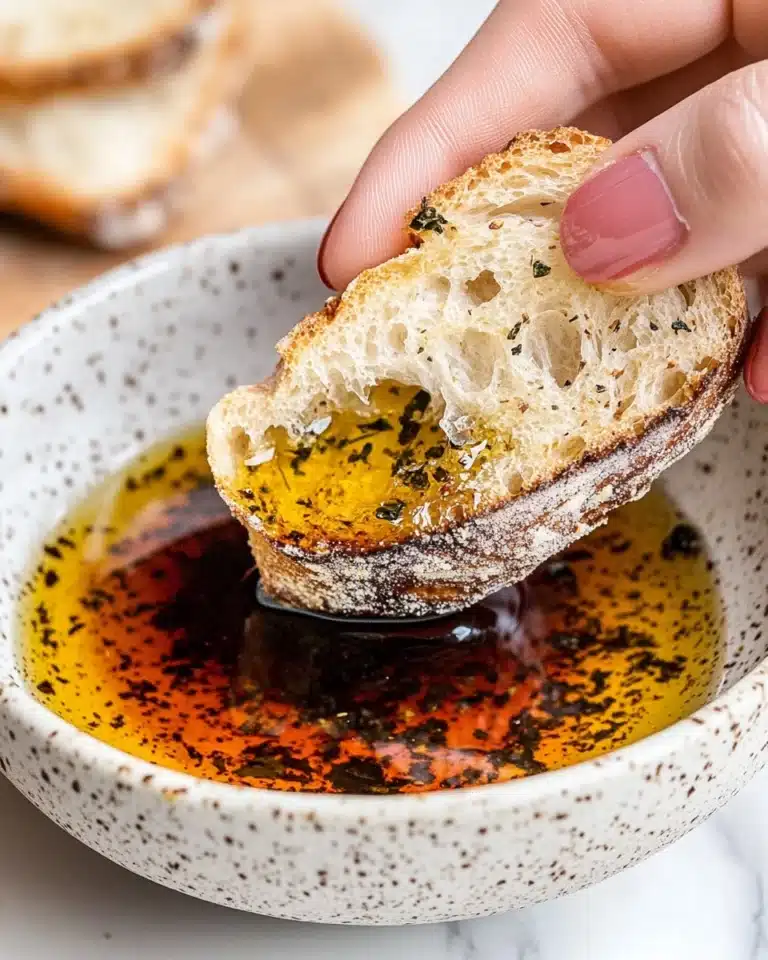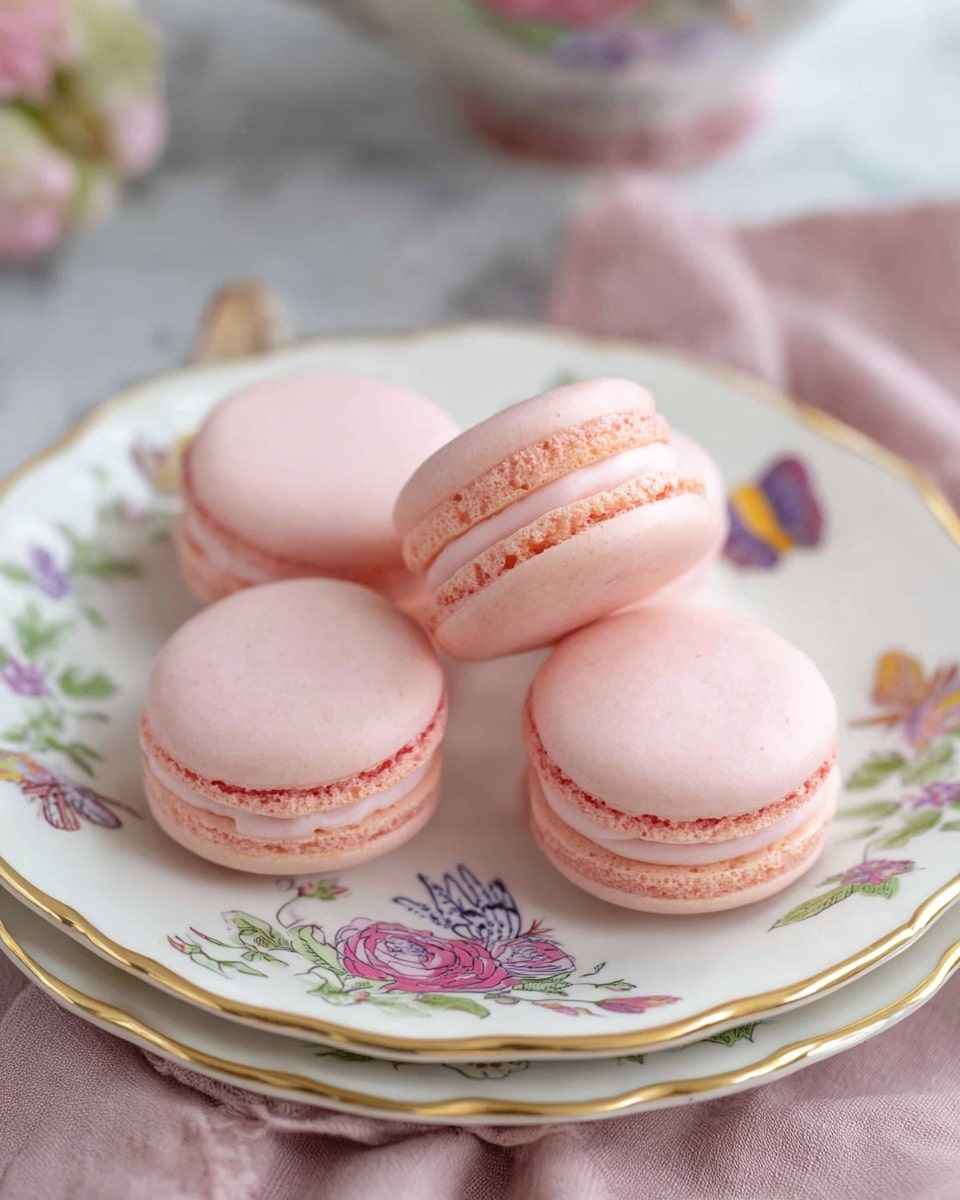
If you’ve ever wanted to master that bakery-perfect treat, you’re going to adore this Macaron with French Buttercream Filling Recipe. I absolutely love how delicate, chewy, and just… magical these little confections turn out when you nail the technique. Plus, the French buttercream filling is so creamy and dreamy—it’s the kind of recipe that makes your kitchen smell like a patisserie and your friends think you’re a dessert wizard. Stick with me, and I’ll share every trick and tip to help you succeed, even if macarons have intimidated you before!
Why You’ll Love This Recipe
- Perfect Texture Every Time: The recipe teaches you how to get that signature ‘flowing lava’ batter and marshmallowy meringue for flawless shells.
- Rich, Silky French Buttercream: The filling is luscious but light, with a smoothness that pairs beautifully with the nutty cookie.
- Step-by-Step Guidance: I share personal tips I discovered after many attempts to help you avoid common pitfalls.
- Room for Creativity: You can customize colors and flavors easily, making it perfect for holidays, gifts, or just spoiling yourself.
Ingredients You’ll Need
These ingredients come together to create the elegant shells and the rich French buttercream filling. Each one plays a critical role, so I always recommend using fresh and high-quality products, especially the almond flour and butter, to get that authentic flavor and texture.
- Egg whites: Room temperature is key here to get the meringue just right.
- Almond flour: Fine and fresh – I like to sift and pulse it to avoid any lumps.
- Granulated sugar: Used in both the meringue and the buttercream syrup for structure and sweetness.
- Powdered sugar: Helps give the macaron shells their smooth finish.
- Vanilla: Pure vanilla extract brings that warm, comforting flavor to both shells and filling.
- Cream of tartar: Stabilizes the egg whites for that perfect stiff peak.
- Unsalted butter: Softened and unsalted to let the vanilla and sugar shine in the buttercream.
- Egg yolks: They create that rich texture for the French buttercream.
- Water: For making the sugar syrup, which gives the buttercream its silky texture.
- Salt: Just a pinch balances the sweetness and enhances flavor.
Variations
I like to play around with this Macaron with French Buttercream Filling Recipe depending on the season or mood. Sometimes I’ll add a twist of citrus zest, or swap vanilla for almond or rose water for a floral note. The beauty of macarons is that they’re a blank canvas, so don’t be shy to experiment and make them your own.
- Chocolate Macarons: I’ve had great success incorporating cocoa powder into the dry ingredients, then pairing with a chocolate ganache filling instead of buttercream.
- Fruit-Flavored Filling: Pureed berries added to the buttercream give a lovely tart contrast that my family goes crazy for.
- Vegan Variation: Although not traditional, swapping the buttercream for a coconut cream-based filling can work well for those avoiding dairy.
- Food Coloring and Flavors: Avoid overdoing coloring in the meringue to keep shells from becoming too soft or dense – this trick I learned the hard way!
How to Make Macaron with French Buttercream Filling Recipe
Step 1: Preparing the Dry Ingredients
First up, sift together the powdered sugar and almond flour thoroughly. I can’t stress this enough—sifting makes all the difference between smooth shells versus cracked or bumpy ones. I usually sift, then pulse the mixture in my food processor, and sift again two more times. Any bigger pieces that won’t pass through the sieve are tossed—don’t try to force them in!
Step 2: Whip Your Meringue to Stiff Peaks
In a perfectly clean, dry bowl, start whisking your room-temperature egg whites. Once they’re foamy, add cream of tartar, then slowly add the granulated sugar while continuing to whisk. The key thing I learned was to keep going until the meringue is thick and glossy—like marshmallow fluff wrapping around your whisk. This stiff meringue is absolutely essential for the right texture!
Step 3: Folding the Dry Ingredients
Now for the delicate part—folding the dry ingredients into the meringue. Add about a third at first and gently fold with a spatula, then incorporate the remaining mixture carefully. The batter should look like flowing lava: thick but flowy, capable of falling off your spatula in ribbons and forming a figure-eight shape without snapping. This might take some practice, but be patient—it’s worth it!
Step 4: Piping and Resting the Shells
Spoon your batter into a piping bag fitted with a medium round tip. Pipe one-inch dollops onto parchment paper-lined baking sheets—make sure to “glue” the paper down by piping a little batter on the corners. Tap the tray several times on the counter to release air bubbles, then let the shells rest for about 40 minutes. This drying step helps them form that lovely crust you’re aiming for.
Step 5: Baking to Perfection
Bake your macarons at 300°F for about 12-15 minutes, rotating the tray halfway through for even heat. When they come out, let them cool completely on the sheet before gently removing—this helps prevent breakage. If you ever end up with shells on the crisp side, brushing the bottoms lightly with milk before filling can soften them up beautifully.
Step 6: Crafting the French Buttercream Filling
For the filling, start by combining sugar and water in a saucepan, heating gently until the sugar dissolves. Crank up the heat to boil and watch for the syrup to reach 240°F—this is crucial for that silky buttercream. Meanwhile, whip egg yolks in your mixer until thick and pale. Slowly drizzle the hot syrup into the yolks while mixing continuously; this tempering process prevents curdling. Once cooled to room temperature, add softened butter cube by cube until creamy, then whisk in vanilla and salt. You’ll end up with a dreamy, spreadable buttercream that’s worth every minute!
Step 7: Assembly and Aging
Pipe the French buttercream onto half of your cooled macaron shells, gently sandwich them with the other halves, and voilà—you’ve got a classic French treat! For the absolute best flavor and texture, refrigerate them for 1-3 days to let the filling soften the shells inside. Trust me, this resting time makes all the difference—something I wish I’d known the first time I made these.
Pro Tips for Making Macaron with French Buttercream Filling Recipe
- The Meringue Magic: Whisk your egg whites to a stiff peak—when it holds on the whisk without sliding off, you’re there!
- Sift Multiple Times: Sifting and processing your almond flour and powdered sugar multiple times guarantees smooth, shiny shells.
- Mind Your Folding: Fold gently but thoroughly—your batter should flow like lava but never be too runny or too thick.
- Dry Before Baking: Patience is key—letting shells rest before baking forms that perfect ‘skin’ that prevents cracking.
How to Serve Macaron with French Buttercream Filling Recipe
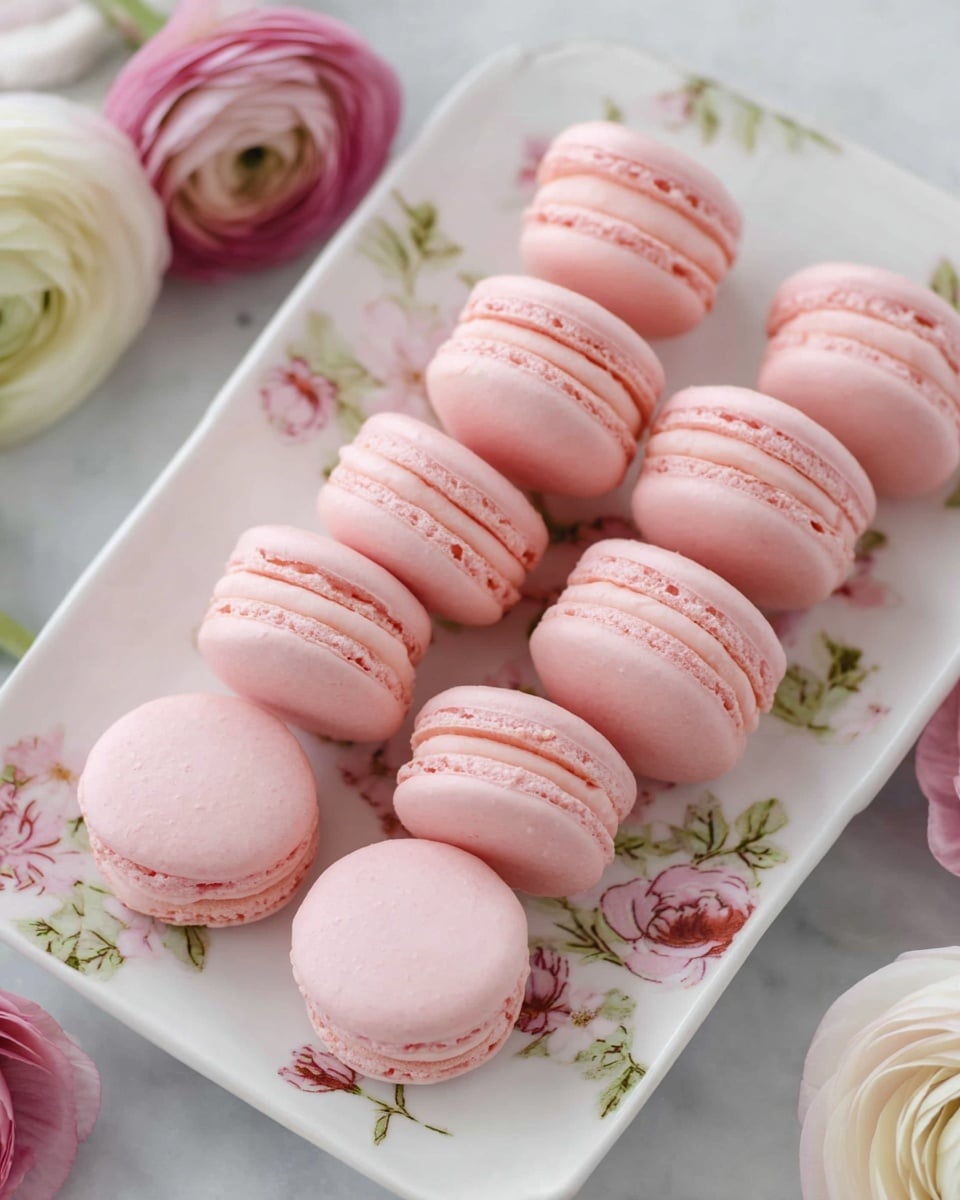
Garnishes
I like to dust just a tiny bit of edible shimmer or a pinch of finely ground freeze-dried raspberries on top of my macarons for a pop of color and a hint of tang. Sometimes, fresh edible flowers add an elegant touch when serving to guests—plus, they’re super easy to find in springtime markets.
Side Dishes
These macarons pair wonderfully with a light cup of Earl Grey or jasmine tea—the floral notes complement the vanilla and buttercream. If you want to get fancy, a glass of Champagne is a delightful match for special occasions.
Creative Ways to Present
For birthdays or holidays, I like to create assorted trays arranged by color themes, sometimes stacking macarons in a clear, tiered box or placing them inside cute gift boxes with ribbons. Another fun idea is building a macaron tower centerpiece for bridal showers—everyone’s always impressed!
Make Ahead and Storage
Storing Leftovers
I always store leftover macarons in an airtight container in the fridge—wrapped gently in parchment paper if stacking. They keep beautifully for up to a week, and the flavors even deepen after resting. Just remember to bring them back to room temperature before serving so the buttercream shines.
Freezing
Freezing macarons works surprisingly well! I wrap them individually in plastic wrap, then place them in a freezer-safe container. When you want a treat, thaw them slowly in the fridge overnight. Their texture holds up nicely, though they’re best eaten within a month.
Reheating
If you want to freshen up slightly stale macarons, I’ve found letting them sit at room temperature for about 15-20 minutes works wonders. Avoid microwaving—they tend to get rubbery. A little patience brings back their signature chewiness perfectly.
FAQs
-
Can I make macarons without a stand mixer?
Yes! You can whisk the egg whites by hand using a balloon whisk, but it requires more elbow grease and patience. The key is to reach stiff peaks, so go slow and steady—using a stand mixer just speeds up the process.
-
Why did my macarons crack or have hollow shells?
Common causes are under- or over-mixing the batter, not letting shells dry before baking, or baking at the wrong temperature. Letting the piped shells rest until they form a dry skin is crucial to prevent cracking, and carefully folding your batter to the right lava-like consistency helps avoid hollows.
-
How long should I let the macarons rest before baking?
About 40 minutes is usually ideal. You’ll know they’re ready when you can gently touch the surface and it feels dry rather than sticky. This step helps form the classic macaron skin that’s essential for the perfect texture.
-
Can I use different flavors in the French buttercream filling?
Absolutely! Vanilla is classic, but you can add extracts like almond, coffee, or citrus zest. Just add them after the buttercream is smooth to keep the texture perfect.
-
Is it necessary to age macarons after assembly?
While you can enjoy them right away, letting the assembled macarons rest in the fridge for 1-3 days softens the shells and allows flavors to meld, creating a superior eating experience. Patience pays off!
Final Thoughts
Making macarons felt like a daunting challenge until I found this foolproof Macaron with French Buttercream Filling Recipe. What I love the most is that with a bit of patience and care, *you* can create these delicate little wonders right at home, and the reward is absolutely worth it. Whether it’s your first try or your tenth, I hope you enjoy the process as much as the delicious results—and maybe even find yourself surprised by how much fun baking macarons can be!

